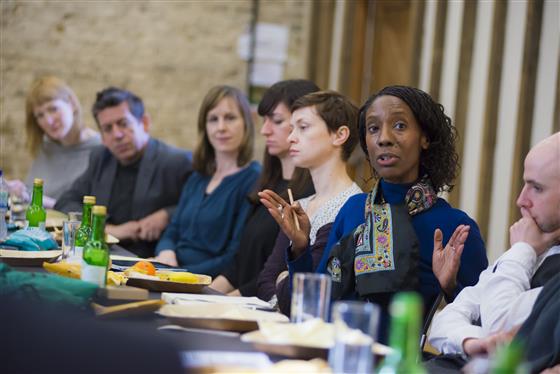
An alliance for culture change
After conducting a review into governance in the arts, Hilary Carty now finds herself leading the response to it. She reveals the Clore Leadership Programme’s plans and priorities for supporting arts boards.
When I responded to the Clore Leadership Programme (CLP) brief to review the state of governance in arts organisations and museums (along with my colleagues at the time at Co-Creatives Consulting David Bryan and Anne Murch), we had no inclination that I would later be sat in the Director’s chair at CLP and be responsible for considering its recommendations. ‘Be careful what you ask for’ is a wise Chinese proverb.
The challenge of diversifying boards still looms large, with a lack of progress dampening morale and undermining good intention
But in this instance, the ask seems rational, as it responds to an area acknowledged to be at the crux of organisational leadership and, therefore, at the heart of both challenge and opportunity for cultural leaders, institutions and sectors.
The review found strong evidence of good practice, with organisations making determined efforts to provide and sustain cultural provision of the highest calibre in a climate of diminishing resources and intense public scrutiny. When published in summer 2017, the key findings from Achieving Good Governance seemed to chime with the tangible experience of sector boards and trustees.
Key issues at the top of their agenda included the following:
- Focusing on strategic priorities and constructively engaging boards with the longer-term agenda
- Effectively balancing creative and strategic dialogue so that discussions on artistic and creative vision and programming regularly took place
- Harnessing both people and strategies to meet the challenge of fundraising
- Ensuring that trustees were informed and equipped to champion the organisation, balancing risk management with reputation management and advocacy.
Eclectic voices
How do we encourage a more eclectic range of voices at board level, encouraging individuals with relevant, transferable skills and experience to embrace trusteeship?
The challenge of diversifying boards still looms large, with a lack of progress dampening morale and undermining good intention. But the clarion call of it being time to break the cycle is echoed across large and small boards, no longer asking why and seeming eager to learn how to effect change.
How too to address some of the rudiments of good practice in board recruitment and induction, board rotation and succession planning, plus the effective chairing of meetings and getting the right balance of executive and non-executive interaction.
That blend of strategic and operational issues is now driving the sector’s response to the review and harmonising an intention to do things differently going forward.
Tools and workshops
At the operational level, we have pushed hard to build a fresh body of resources in our Practical guide to governance of arts and museums, which shares tools, tips and templates to support organisations in achieving best practice.
Our popular chair/CEO days, which respond directly to the questions and issues faced by organisations at discrete moments in time, were recently over-subscribed, so we have commissioned further dates over this spring and summer to support this priority pairing of leadership at the forefront of organisational development and change.
We are also commissioning a day focused on tackling diversity at governance level – not a talk-shop as we know the arguments. Rather, our day will look directly at strategies and actions, drawing on good practice expertise and experience to equip and energise participants to meet this challenge.
At the strategic level, a new and dynamic intervention is taking shape where we are seeking to catalyse action for change through collaboration and partnership. We tested the appetite for an ‘alliance’ across sector organisations engaged with the governance development agenda – and the response has been both immediate and affirmative. The ambition to collaborate for change is palpable. Whether offering workshops, training, advice or information, all share the ambition to strengthen the business of governing organisations and acknowledge the enhanced benefit of collective endeavour.
Governance Alliance
So, the Governance Alliance is being explored – a light touch collective of sector agencies and organisations working together to champion and improve the governance of culture. It’s a strategic peer network that seeks to harmonise and share best practice, to encourage trustee boards to engage within and across sectors – itself learning and exchanging to build and enshrine good governance principles into practice.
It’s early days and we are still working it all out. But what is special is that we are working it out together, sharing ideas and options to tackle the most pressing questions. We are grappling with the challenge of adding value to sector practice without creating an unhelpful new infrastructure.
How best to acknowledge the key strengths and priorities for those already delivering governance development, and build on these for added impact and engagement? How can we effectively promote the existing range of governance opportunities and introduce new provision only where gaps exist? How might we encourage discrete membership groups to embrace new approaches from outside their sectors? And what is the best mechanism for delivering culture change when resources are tight, demands are high and time is short?
These knotty questions are at the top of our agenda as we collaborate to make the difference we know is needed. The sector seeks collaboration and simplicity, ease of access, assurance of quality and reliability of provision. This is an important one to get right.
Hilary Carty is Director of Clore Leadership Programme.
www.cloreleadership.org
Tw @cloreleadership
For further information about the development of the Governance Alliance please email [email protected].
Join the Discussion
You must be logged in to post a comment.